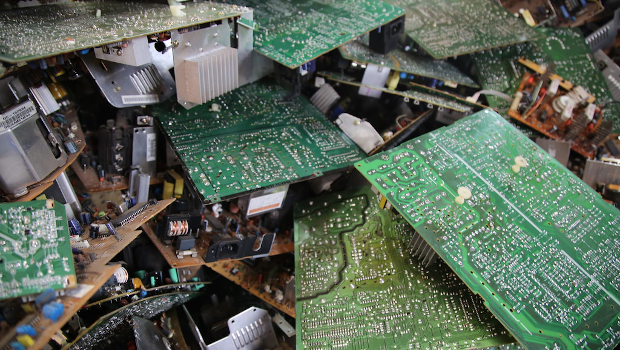
WEEE fears lockdown clearouts could derail Ireland’s e-waste target
Difficulties in recycling electrical waste from household clearouts during lockdown could derail Ireland’s compliance with EU targets after a record year, WEEE Ireland has warned.
WEEE Ireland was the second-best performing recycling scheme in Europe in 2019, with 38,594 tonnes of waste electrical items and the equivalent of over 44 million used AA portable batteries collected, its annual report has revealed.
A new national record of 10.89kg of e-waste was recycled per head of population last year by WEEE Ireland – a rise of 6.2% on 2018. The scheme was one of the few in Europe to meet the EU environmental directive target to recover the equivalent of 65% of the average weight of all new electrical equipment placed on the market by its members over the three preceding years.
However, WEEE Ireland’s CEO claimed the country could struggle to meet the 65% benchmark figure this year if an expected glut of waste electrical items is not diverted from landfill.
“Households throughout the country have used the lockdown to carry out extended spring cleaning, and it is vital that these end of life electrical items do not end up in landfill, or worse illegally dumped, destroying the progress that we have made as a nation,” said Leo Donovan, CEO, WEEE Ireland.
“Now that people are free to travel within their counties, we are urging consumers to avoid an e-waste crisis by recycling for free at their local authority recycling centres and participating retailers which have now reopened.”
Donovan continued: “2019 was a major target year when we successfully demonstrated that a structure was in place to effectively manage e-waste from households. However, 2020 brings a different challenge.
“We are facing a battle to stay on target against an increase in electrical and electronic products sold over the past three years and the impact of the COVID-19 lockdown on recycling.”
The equivalent of 227,000 tonnes of CO2 emissions were avoided by diverting e-waste from landfill through the scheme last year – the equivalent of the annual carbon consumption of 4,543 hectares of trees.
Over 19 million pieces of e-waste were recovered in 2019 including 3.2 million lamps and lightbulbs, 334,000 large household appliances, 194,000 TVs and monitors and 122,000 fridges.
Take back of small household electrical appliances increased by 15% last year, and is recycled in Ireland which allows resources such as plastics, metals and glass to be recovered for further use in manufacturing and ensures that hazardous waste is disposed of safely.
“Fifty-six percent of e-waste collected in 2019 came from our retailer collection points, rising for the fifth year in a row, with 27% being recovered at local authority sites,” said Donovan.
“Our special events such as free public collections, and in the workplace and education settings accounted for 17% of the total, showing that when prompted, the public will deliver – with almost every county in Ireland showing an increase on their annual recycling figures.
“It is important to know that 82% of all material that we collect is recovered for use again in manufacturing through both indigenous operators and specialist processors in Europe.
“We now need to deliver a transformative scheme to bring producers and the e-waste sector in Ireland further into the circular economy, which is an integral part of the EU’s Green Deal, over the next 15 years.
“This future will include more collection and recycling activities and we are also embedding other activities from higher up the waste hierarchy into operations, including more waste prevention, repair and reuse activities.”
TechCentral Reporters








Subscribers 0
Fans 0
Followers 0
Followers